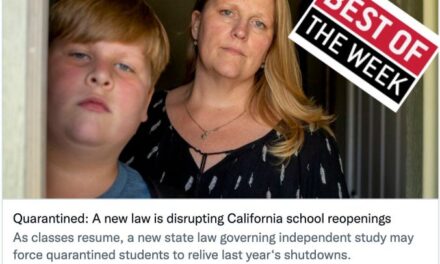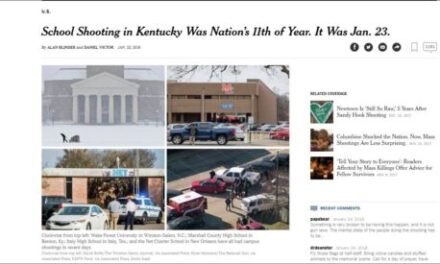Benjamin Herold’s ‘Disillusioned’ confronts magical thinking around suburban schools but fails to generate a coherent narrative.
By Anya Kamenetz
If you want to understand both a community’s priorities and its prospects, look to the sewers.
That’s one of the most pungent insights in Benjamin Herold’s tale of “the flaws in suburbia’s foundation burst[ing] into public view.”
Herold, a former staff writer for Education Week, spent several years meticulously reporting “Disillusioned: Five Familes and the Unraveling of America’s Suburbs.” And it shows.
His care and compassion for his subjects is evident, and the level of detail is novelistic yet supported by copious data.
His purpose is to underline how suburbs have become an enduring locus of segregation and rationing of public resources — notably, education — for people of color and lesser means.
Thus the sewers: An affluent exurb of Dallas prides itself on not having them. Private septic systems serve the minimum one-acre lots, ensuring no affordable housing and no working-class kids in its schools.
According to Herold, the toxic cycle of white flight over generations amounts to U.S. government policy. In lieu of building a strong physical infrastructure and social safety net for all, he writes:
“Our government had essentially paid millions of white families to run away from Black America, then encouraged us to cycle through a series of disposable communities with shelf lives just long enough to extract a little more opportunity before we moved out, stuck someone else with the bill, and restarted the cycle somewhere new.”
According to Herold, the toxic cycle of white flight over generations amounts to U.S. government policy.
See also Herold’s first-person essay about writing the book: Scrutinizing suburbia, and myself.
There are plenty of beautifully reported stories in the book about communities and individual families. But I didn’t leave the book with a single, enlightening “Aha!” moment that married the many details to a cohesive or groundbreaking message.
My takeaway was that there are great and mediocre teachers, strong and struggling students, in schools all over the country. And dollars and cents don’t make the only difference in kids’ futures, although they certainly help.
I found myself wondering if I was missing something. Herold and I are basically the same age, but the book seems addressed to an older generation’s rosier set of assumptions about America.
Rings of suburbia
A disproportionate number of prominent nonfiction narratives about kids and schools seem to focus on the poor. Jonathan Kozol’s “Savage Inequalities”; Alex Kotlowitz’s “There Are No Children Here”; or more recent entries like Andrea Elliott’s “Invisible Child” and Nikhil Goyal’s “Live To See The Day” wring easy pathos from the plight of innocent children at the hands of the powerful and largely indifferent.
Herold is trying something rarer. He’s telling a story of the middle: American families who want something better out of life and are somewhere on their way to getting it.
The book is organized into three main elements: First, a sweeping argument about the economics and sociology of America’s changing suburbs. Second, the dreams, triumphs, and disappointments of five diverse families in five different suburban school systems across the country. And third, an autobiographical thread about Herold’s own complicity in this history based on race and class privilege.
Herold is trying something rarer. He’s telling a story of the middle: American families who want something better out of life and are somewhere on their way to getting it.

The argument about white flight is cogent, if somewhat familiar; the narrative is empathetic and top-notch, but it doesn’t always track the argument; and the autobiographical material, though admirable in its intent, ultimately left me uneasy.
The recurring problem with suburbia, as Herold explains, is that people tend to move to newly built suburbs looking for bigger homes, bigger yards, good schools, a bright future….and lower taxes. This formula doesn’t compute for long.
Underinvestment in infrastructure on the front end yields to a spiral of fiscal debt and decrepitude. By then, richer and whiter folks are up and out, over the hills to the next promised land.
To illustrate the dynamic, Herold takes us to Compton near south Los Angeles, Evanston near Chicago, Gwinnett County outside Atlanta, Lovejoy near Dallas, and Penn Hills, his own suburban hometown outside Pittsburgh.
Everywhere, he diagnoses “a relentless cycle of racialized development and decline that took root after World War II, then sucked huge swaths of the country into a pattern of slash-and-burn development that functioned like a Ponzi scheme.”
The problem for a book titled “Disillusioned” is that in 2024, I’m not sure how many people sustain the illusion that the American dream is viable in the first place — nor that it’s to be found in the land of cul-de-sacs and two-car garages.
The problem for a book titled “Disillusioned” is that in 2024, I’m not sure how many people sustain the illusion that the American dream is viable in the first place — nor that it’s to be found in the land of cul-de-sacs and two-car garages.
Herold is an education reporter, so presumably the book is meant to answer what impact these patterns have on kids in schools. But for the majority of the book, the attention to the particulars of each family’s experience — and that detailed reporting is the book’s great strength — tends to obscure Herold’s larger thesis.
He also had to contend with the fallout of the pandemic, which upended everyone’s lives in unforeseen and contradictory ways.
The families
Meeting the students in Herold’s book is certainly one of its great pleasures. He has a particular gift and affection for the classroom scene. Even his math lessons leap off the page, conveying the elation when the lightbulb of discovery goes off.
“Outside, the morning sun still hung low on the horizon, casting long shadows on the sidewalk that surrounded the school,” he writes of a geometry class in Gwinnett County, Georgia. “Your mission [the teacher] said, is to figure out the angle at which sunlight is striking the ground…The students realized with delight that they’d all calculated the same angle.”
There’s a social message to this scene. While the slower-tracked math class is subject to rote learning with little explanation, the “gifted” kids in the very same school are getting outside and learning hands-on through discovery.
Again and again, we see how the dynamics of racism and culture wars play out in public schools and affect the life chances of the children within them.
For example, Corey, one of the Black boys who is bored and restless in that slower-tracked math class, starts to be scapegoated by the discipline system in a way that destroys his love of school. Remote learning actually restores his happiness — a dynamic I also came upon occasionally while reporting on schools during Covid for NPR — but it’s hardly a solution for the widespread problem of disproportionate school discipline.
Again and again, we see how the dynamics of racism and culture wars play out in public schools and affect the life chances of the children within them.
Similarly, in Evanston, Illinois, which sees itself as a bastion of wokeness and was once one of the nation’s shining examples of deliberate public school integration, a young boy and his mother nevertheless grapple with clear incidents of racism at school. As social ties fray through the pandemic, and with the Black Lives Matter uprising in 2020, Herold witnesses a dispiriting trend of what looks like white people getting fatigued with “antiracism,” “opening a window onto the tensions that had long been festering beneath Evanston’s idyllic surface.”
In Lovejoy, Texas, Covid and its associated cultural upheaval turns the Trump-supporting Beckers, the only white family profiled in the book, away from the luxury school district to an online, private Christian outfit called Freedom Project Academy. Declining public school enrollment is a national trend, too.
Meanwhile Compton, synonymous with urban blight for decades, has morphed into a place of surprising promise. Local school leaders practice shrewd coalition building among Black and brown communities. They cobble together state funding, nonprofit assistance, and corporate support from the tech industry to yield rich learning experiences for Jacob, a bright son of Mexican immigrants, who writes poetry, draws comic books, and desperately wants to start a school newspaper.
So does local tax revenue make all the difference, or can entrepreneurism and good leadership overcome obstacles and beat the odds? Herold never makes it entirely clear.
The author’s story
Herold takes a risk with the autobiographical thread of the book, which I respect. He earnestly confronts his own whiteness. He wants us to know that he knows how unfair it is that he personally benefited from earlier, better days in Penn Hills, before his father sold their house at a loss, for cash, abandoning the now rundown neighborhood for greener pastures in retirement, and leaving a heavily symbolic pile of debris and unfinished projects in the backyard.
He explores these feelings in particular through uneasy conversations with Bethany Smith, a single Black mother who is currently raising a son on the same street where Herold grew up. After one conversation with her, he says, “Suddenly, the parts of myself I’d always struggled to see clearly — my whiteness, the history that came with it, the harms I caused without even noticing — were impossible to miss.”
So does local tax revenue make all the difference, or can entrepreneurism and good leadership overcome obstacles and beat the odds? Herold never makes it entirely clear.
As a white, privileged journalist who has also been entrusted with many stories of Black, brown, Indigenous, immigrant, and working-class families over the years, I’ve certainly felt the discomfort and self-consciousness Herold describes. At the same time, as journalists, our subjects aren’t there to help us understand ourselves better. We are there to serve them.
But then Herold does something that — almost — redeems the entire book. He hands over the keyboard to Smith, paying her, he tells us, to write the epilogue.
Smith describes feeling exploited by his reporting. And she seems irked that he wants to keep reminding her of all the ways Penn Hills is systemically failing — potholes, rising taxes, financial mismanagement of the school district, and high sewage bills. After all, this is the place she has staked her life and her dreams.
“White people are always fucking some shit up, then expecting everybody else to go fix it. Why should Penn Hills be any different? White families lived here so they could have opportunities. They fucked things up. And now you have Black people like me expected to fix these problems that they didn’t have a hand in creating.”
But she refuses to be a victim, and she insists on self-determination and a measure of hope. “We want the same deal that the suburbs gave white families like Ben’s. This time, though, we want it to last.”
Her voice complicates the book’s argument in a productive way; I wish there were more of it.
Anya Kamenetz covered education for many years including for NPR. Her newest book is “The Stolen Year: How Covid Changed Children’s Lives, And Where We Go Now.” Kamenetz is an advisor to the Aspen Institute and the Climate Mental Health Network, working on new initiatives at the intersection of children and climate change. She writes the Substack The Golden Hour on related topics.
Previously from The Grade:
‘America to Me’ highlights the need to deepen school integration coverage
How education reporters ignore fast-changing suburbs
Praise and a wish for more from ‘Raising Kings’
‘Grapevine’; more than just another school culture wars clash?
‘Room 205’ asks big questions about school reform
Previously from/about this author:
‘We could have been a lot louder,’ says NPR’s Anya Kamenetz
Climate and schools: The biggest education story you’re probably not covering.
ABOUT THE AUTHOR

The Grade
Launched in 2015, The Grade is a journalist-run effort to encourage high-quality coverage of K-12 education issues.















